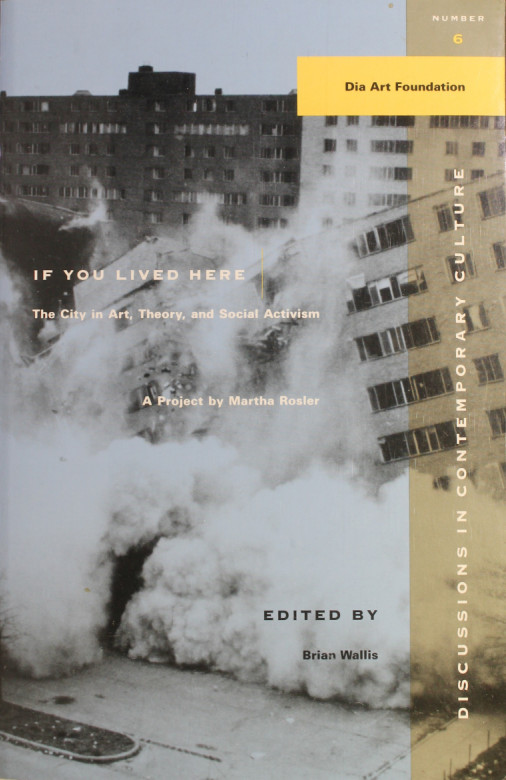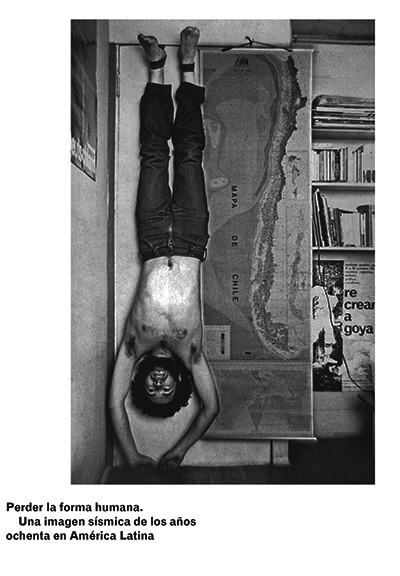Diana Taylor with Lorie Novak (eds.): Dancing with the Zapatistas: Twenty Years Later (2014)
Filed under book | Tags: · activism, art, social movements, zapatistas

“Dancing with the Zapatistas brings together scholars, artists, journalists, and activists to respond to the continuing work of the Zapatistas twenty years after their insurrection in 1994. Available online, this open access multimedia digital book includes essays, photo essays, interviews, and spoken word and theatrical performances that offer insights into the workings of the Zapatista Council on Good Government; the murals in the Caracoles; the Escuelita; Subcomandante Marcos; and Zapatista music and celebrations. The book discusses how Zapatista and Mayan thought permeate the daily life of the Zapatistas, from the way in which their languages configure collective identity to how music affirms the Zapatistas’ conception of history. Ultimately, Dancing with the Zapatistas considers how the Zapatistas work with those outside their movement while covering how they have influenced the practices of activists and artists around the globe.”
Contributors: Brian Batchelor, Henry Castillo, Elvira Colorado, Hortencia Colorado, María Luisa de la Garza, Ricardo Dominguez, Jennifer Flores Sternad Ponce de León, Guillermo Gómez-Peña, Marta Molina, Lorie Novak, Julio Pantoja, Claudia Isabel Serrano Otero, Jacques Servin (a.k.a. Andy Bichlbaum), Alexei Taylor, Diana Taylor, Luis Vargas-Santiago, Moysés Zuñiga.
Publisher Duke University Press, with the Hemispheric Institute of Performance and Politics at New York University, 2014
Open access
via Gabriella Coleman
If You Lived Here: The City in Art, Theory, and Social Activism: A Project by Martha Rosler (1991)
Filed under book | Tags: · activism, art, city, gentrification, home, housing, new york, public space, theory

“This volume documents the present crisis in American urban housing policies and portrays how artists within the context of neighborhood organizations, have fought against government neglect, shortsighted housing policies and unfettered real estate speculation. Through essays, photographs, symposiums, architectural plans and the reproduction of works from the series of exhibitions organized by Martha Rosler, the book serves a number of functions: it’s a practical manual for community organizing; a history of housing and homelessness in New York City and around the country; and an outline of what a humane housing policy might encompass for the American city.” (from the back cover)
With contributions by Christine Benglia Bevington, Marie Annick Brown, Andrew Byard, Cenén, The Chinatown History Project, Clinton Coalition of Concern, Rosalyn Deutsche, Dan Graham and Robin Hurst, Alexander Kluge, The Mad Housers, Tony Masso, The Nation, Richard Plunz, William Price, Yvonne Rainer, Mel Rosenthal, Allan Sekula, Camilo José Vergara, and Dan Wiley.
Edited by Brian Wallis
First published by Bay Press, Seattle, and Dia Art Foundation, New York, 1991
First New Press printing, 1999
Discussions in Contemporary Culture series, 6
ISBN 156584498X, 9781565844988
x+312 pages
via Dubravka
Artist’s archive project, 2009
Artist
Publisher (New Press)
Publisher (Dia)
Exhibition
WorldCat
PDF (75 MB)
Comment (0)Perder la forma humana: una imagen sísmica de los años ochenta en América Latina (2012) [Spanish]
Filed under book | Tags: · 1980s, activism, art history, glossary, latin america

“A glossary tends to be part of an annex appearing at the end of a publication. This book has inverted this logic and structured the entire publication around this tool. The publication is seen as a system that articulates – through relationships of affinity and contagion – a set of key concepts derived from both the lexicon of words and expressions coined by activists and artists during those years and from the anachronistic exercise of reframing these experiences in the light of the present. Each concept incites us to think about those practices, those ways of doing things in art and the politics of the experiences explored. The entries contain references to other categories in the glossary, in which the same experience or common practices can be approached from other perspectives. Furthermore, each entry is accompanied by abundant graphic material, photos and writings from the period, thus forming a profuse and polyphonic documentary base. These key concepts are intended to function as spearheads which, by traversing the material memory of these practices (documents and works of art) and also their immaterial memory (testimonies), give rise to new meanings.”
Published to accompany the exhibition Perder la forma humana [Losing the Human Form. A Seismic Image of the 1980s in Latin America].
“El proyecto editorial Perder la forma humana, ha sido concebido en articulación y diálogo con la propuesta expositiva de igual título. En este sentido, y a diferencia de un catálogo convencional, la publicación no restablece de manera enumerativa trabajos y prácticas presentes en la exposición, sino que se presenta como otro dispositivo (posible) de activación de esas prácticas en una reflexión sobre el presente.
Un glosario suele ser parte de un anexo que se incluye al final de una publicación. Este libro propone invertir esta lógica y estructurar toda la edición en torno a esta herramienta. Es así que la publicación se piensa como un sistema donde se articulan, en relaciones de afinidades y contagios, un conjunto de conceptos clave derivados tanto del léxico acuñado durante aquellos años por activistas y artistas como del ejercicio anacrónico de re-enmarcar estas experiencias a la luz del presente. Cada concepto constituye una entrada para pensar las prácticas, los modos de hacer arte y políticas de las experiencias investigadas. Las entradas contienen referencias a otras categorías del glosario, donde una misma experiencia o prácticas afines pueden ser enfocadas desde otras perspectivas. Por otro lado, cada entrada se completa con abundante material gráfico, fotos y escritos de época, formando una base documental profusa y polifónica. Estos conceptos clave aspiran, en definitiva, a funcionar como puntas de lanza que, al atravesar la memoria material (documentos y obras) e inmaterial (testimonios) de esas prácticas, propongan nuevas tramas de sentido.”
Edited by Red Conceptualismos del Sur
Publisher Museo Nacional Centro de Arte Reina Sofía, Madrid, 2012
ISBN 9788480264624
280 pages
Reviews: Juan Vicente Aliaga (Critique d’art 2012 FR), Horacio Ramos Cerna (Illapa 2013 ES).
Editors
Exhibition (EN)
Exhibition
Exhibition (Museo de Arte de Lima, Peru, 2014)
WorldCat
PDF, PDF (9 MB)
Portuguese trans. of Introduction

